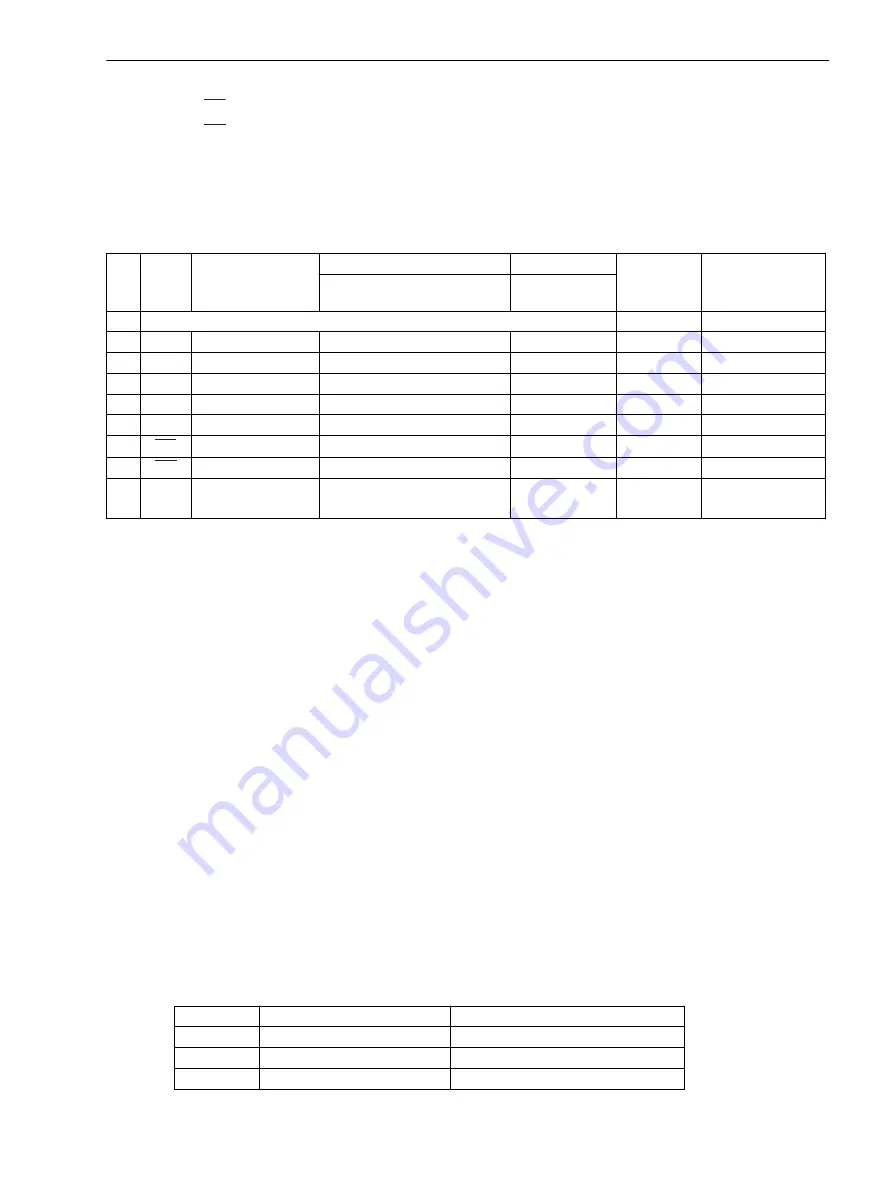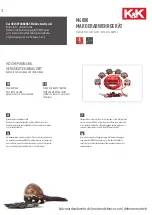
•
RTS = Request to send
•
CTS = Clear to send
•
GND = Signal/Chassis Ground
The cable shield is to be grounded at both ends. For extremely EMC-prone environments, the GND may be
connected via a separate individually shielded wire pair to improve immunity to interference.
Table 3-31
Connector Assignment at the Various Interfaces
Pin-
No.
RS232
RS485
Profibus FMS Slave, RS485
Modbus RS485
EN 100
elektr.
RJ45
IEC 60870–5–103
redundant
RS485 (RJ45)
Profibus DP Slave, RS485
DNP 3.0 RS485
1
Shield (electrically connected with shield shroud)
Tx+
B/B’ (RxD/TxD-P)
2
RxD
–
–
–
Tx–
A/A’ (RxD/TxD-N)
3
TxD
A/A’ (RxD/TxD-N)
B/B’ (RxD/TxD-P)
A
Rx+
4
–
–
CNTR-A (TTL)
RTS (TTL Pegel)
–
5
GND
C/C’ (GND)
C/C’ (GND)
GND1
–
6
–
–
+5 V (max. load with 100 mA)
VCC1
Rx–
7
RTS
–
1)
–
–
–
8
CTS
B/B’ (RxD/TxD-P)
A/A’ (RxD/TxD-N)
B
–
9
–
–
–
–
not
provided
1)
Pin 7 also carries the RTS signal with RS232 level when operated as RS485 interface. Pin 7 must therefore
not be connected!
Additional Interface (only 7SJ64)
The additional interface (Port D), which is only available for 7SJ64, is used to connect signals from an RTD box.
The connection according to one of the connection examples given in Appendix
must
be verified. For the assignment of the connectors see the table above.
Termination
The RS485 interface is bus-capable for half-duplex operation with the signals A/A' and B/B' and the common
reference potential C/C' (GND). Verify that only at the bus of the last device the terminating resistors are
connected but not at the bus of the other devices.
The jumpers for the terminating resistors are located on the interface module RS485 (see
Profibus RS485 (see
). With 7SJ64 they are located directly on the C–CPU-2 (see
The terminating resistors can also be connected externally (e.g. to the connection module, as illustrated in
). In this case, the terminating resistors located on the module must be disconnected.
If the bus is extended, make sure again that only the last device on the bus has the terminating resistors
switched-in, and that all other devices on the bus do not.
Time Synchronization Interface
It is optionally possible to process 5 V-, 12 V- or 24 V- time synchronization signals, provided that they are
carried to the inputs named in the following table.
Table 3-32
D-SUB socket assignment of the time synchronization interface
Pin-No.
Description
Signal Meaning
1
P24_TSIG
Input 24 V
2
P5_TSIG
Input 5 V
3
M_TSIG
Return Line
Mounting and Commissioning
3.2 Checking Connections
SIPROTEC 4, 7SJ62/64, Manual
413
C53000-G1140-C207-8, Edition 08.2016
Summary of Contents for SIPROTEC 4
Page 8: ...8 SIPROTEC 4 7SJ62 64 Manual C53000 G1140 C207 8 Edition 08 2016 ...
Page 18: ...18 SIPROTEC 4 7SJ62 64 Manual C53000 G1140 C207 8 Edition 08 2016 ...
Page 30: ...30 SIPROTEC 4 7SJ62 64 Manual C53000 G1140 C207 8 Edition 08 2016 ...
Page 540: ...540 SIPROTEC 4 7SJ62 64 Manual C53000 G1140 C207 8 Edition 08 2016 ...
Page 594: ...594 SIPROTEC 4 7SJ62 64 Manual C53000 G1140 C207 8 Edition 08 2016 ...
Page 720: ...720 SIPROTEC 4 7SJ62 64 Manual C53000 G1140 C207 8 Edition 08 2016 ...















































